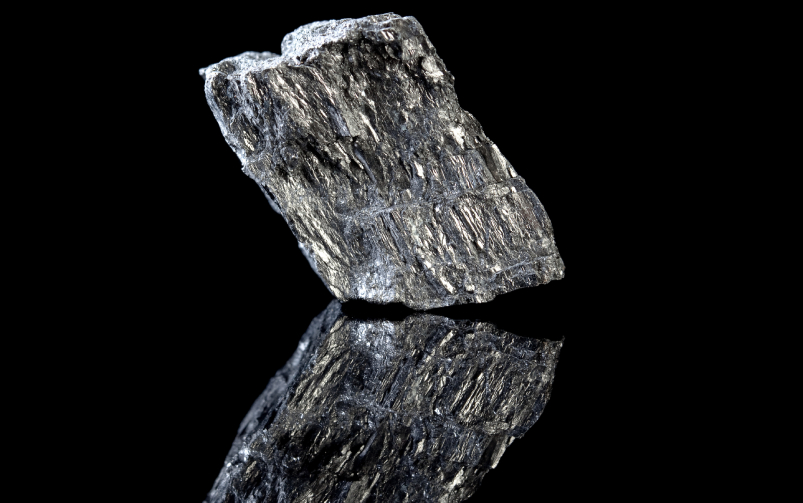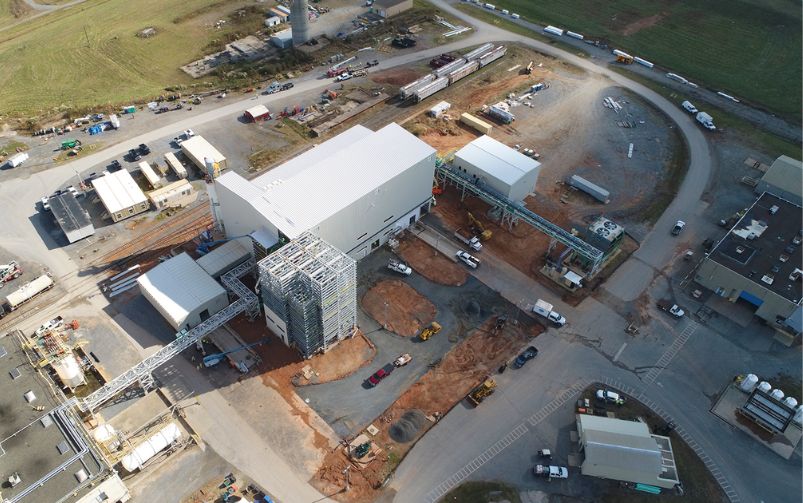Taseko Mines’ Florence Copper facility in Arizona. The miner recently received a key permit from the U.S. Environmental Protection Agency. Courtesy of Taseko Mines.
Welcome back to your weekly mining news recap, where we catch you up on some of the news you may have missed. This week’s headlines include Barrick’s big plans for 2031, a Biden administration push to make hard rock miners pay royalties on federal lands and progress for West High Yield Resource’s Record Ridge magnesium project.
South Korean battery maker Solus Advanced Materials has announced plans for its subsidiary, Volta Energy Solutions, to open a $750 million battery-grade copper foil plant in Granby, Quebec. The provincial government will provide a $150 million loan to help revitalize the copper plant, which ceased production in 2005. The copper foil produced will be used in electric vehicle batteries for the North American market.
Lundin Mining has received a key environmental impact assessment for its Candelaria complex in Chile, enabling it to extend the mine life for another 10 years to 2040, as reported by Mining.com. The assessment, pending final approval from the country’s Environmental Assessment Service, permits new underground and pit expansion to the copper and gold project.
Agnico Eagle announced the opening of its $320 million No. 4 shaft at its Macassa mine in Kirkland Lake, Ontario, as reported by CTV News. The 6,395-foot-deep shaft has been under construction since 2019 and is expected to boost production and cut costs. Agnico marked the occasion by announcing a $3 million donation over 10 years to the Canadian Cancer Society.
The Biden administration is recommending introducing royalties on hard rock mining on U.S. federal lands, although the plan is unlikely to pass Congressional approval given the Republican control of the House of Representatives, as reported by The Associated Press. The interagency proposal would add a variable four per cent to eight per cent net royalty for about 750 mines.
The U.S. Environmental Protection Agency (EPA) has issued a final Underground Injection Control Permit to Vancouver’s Taseko Mines for its Florence Copper in-situ project in Arizona, as reported by Reuters. According to a NI 43-101 technical report filed by Taseko in March 2023, the mine will produce 85 million pounds of copper per year, at US$1.11 per pound, for 22 years. Having secured both EPA and Arizona Department of Environmental Quality permits, construction is expected to begin on the copper project shortly.
The Osoyoos Indian Band has signed a cooperation agreement with West High Yield Resources, following an independent review of its Record Ridge magnesium project, as reported by Canadian Mining Journal. The project is located near Rossland, B.C., and is 100 per cent owned by West High Yield. The mine is estimated to have a 20-year life, and an after-tax net present value of US$872 million with a five per cent discount rate, according to its prefeasibility study.
A new report recommends the use of timber, especially cross-laminated timber, for constructing mine site buildings, as reported by Northern Ontario Business. Timber buildings are easily disassembled, meaning they can be relocated to other sites, and emit half as much carbon over their lifespan compared to typical building types used at mine sites. The report was a collaboration between the Thunder Bay Community Economic Development Commission and the Thunder Bay-based Centre for Research and Innovation in Bio-economy.
Barrick Gold Corp. plans to increase its gold output by 30 per cent to 6.8 million gold equivalent ounces by 2031 and more than double its copper output by the same date, Barrick president and CEO Mark Bristow told investors on an update call. The largest drivers of copper output growth will be the Reko Diq mine in Pakistan and the expansion of the Lumwana project in Zambia, both of which are targeting feasibility studies by the end of 2024 and first production by 2028.
Global Mining Guidelines Group held its Sudbury Forum this week, where Glencore discussed the difficulties of providing all-electric mobile equipment in its new Onaping depth mine, as reported by Northern Ontario Business. Glencore’s innovation manager shared the miner’s challenges with choosing and testing batteries, locating charging stations and managing a mixed fleet in the mine. Global Mining Guidelines Group CEO Heather Ednie noted that the mining industry has seen an uptake in sharing information as it prepares for the challenge of widespread electrification.
In the August issue of CIM Magazine, Ailbhe Goodbody profiled Stantec senior environmental planner Lee Ann Malley, who has a proven track record of championing public engagement and consent building in resource industries. In the profile, Malley shared her recent experiences advocating for neuro-inclusion in the workplace, in addition to how her forestry background has been an asset for working with mining clients.
That’s all for this week. If you’ve got feedback, you can always reach us at editor@cim.org. If you’ve got something to add, why not join the conversation on our Facebook, Twitter, LinkedIn or Instagram pages?




